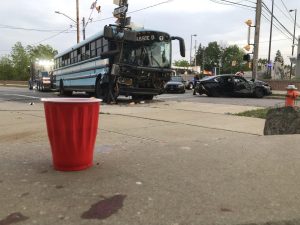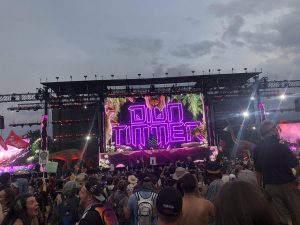The Extraordinary Stories of Northern Ireland
Oct 10, 2019
This past summer, I went on the John Carroll University Ireland Peacebuilding program to study the Troubles and peacebuilding efforts in Northern Ireland and became enchanted with the city of Belfast.
Belfast had a distinctly Cleveland feeling; it was a city trying to make a comeback from its heyday as an industrial powerhouse. I felt as if we were kindred spirits with the people of Belfast. They talked a lot of smack about their city, but don’t you dare disrespect it. God help you if you blaspheme this corner of Heaven.
Much like my own city of Cleveland, Belfast can be mischaracterized. The narrative of Belfast isn’t one of hatred and tragedy (though it has endured plenty of hatred and tragedy during the 30-year period known as the Troubles, when 3,500 died in sectarian and political violence from 1968-1998).
The narrative that I felt while there was one of resilience. In spite of the pain of those who survived the Troubles, they are moving forward towards peace — not always in a straight line — but forward nonetheless.
Unfortunately, we think we already know the story of the troubles, and so we forget to listen to it in its entirety.
Chimamanda Ngozi Adiche’s TED talk, “The Danger of a Single Story,” addresses what happens when a narrative is told through one narrow lens. Adiche says: “The Palestinian poet Mourid Barghouti writes that if you want to dispossess a people, the simplest way to do it is to tell their story and to start with ‘secondly.’
“Start the story with the arrows of the Native Americans and not with the arrival of the British, and you have an entirely different story. Start the story with the failure of the African state and not with the colonial creation of the African state, and you have an entirely different story.”
Just as damaging, I think, can be to end someone’s story without telling the last chapter, or at the very least, letting people know about the existence of an epilogue. How do we tell the stories of Northern Ireland?
End with the British paratroopers killing peaceful protestors on Bloody Sunday, and not the extensive police reform and later the British government’s apologies, and you have an entirely different story. End with a man’s wife being killed in a bombing, and not with him moving his daughter into a diverse neighborhood because he doesn’t want her to be afraid of someone just because of their religion, and you have an entirely different story.
It’s very easy to never question the narratives that your parents, your school or your church told you. It makes everything so simple, to spend your entire life never examining your beliefs.
Deciding that you don’t want to continue as a passive actor in your own life takes great courage — courage to wonder what else is out there and courage to break the social norms you had adhered to, up until now.
I look at some of the people who lived through the Troubles who could not find the courage to question or examine their lives. They could not look to see that maybe their words were flawed. They chose the easier path to live in a narrative that reinforces their beliefs.
After the academic portion of the trip concluded each day, we would go out in the evenings for dinner and to experience pub culture in Belfast. We interacted with a lot of Queen’s University students our own age. Through those interactions, I found an overwhelming sentiment that my generation has no interest in continuing or reigniting the conflict, not because they fear violence, but because they don’t care about the sectarian divides.
I’m not sure whether this is the work of peacebuilding efforts implemented after the Good Friday Agreement or just indicative of a 20-year-old’s desire to do the exact opposite of their parents.
However, not choosing to reignite conflict is not the same as choosing to integrate with the “other.”
For example, one evening I was speaking with a boy from the Protestant community who stated he “would never marry a Catholic.” For many, this is enough: not inciting violence against the Catholics. This boy doesn’t live in a rage against Catholics; he just prefers to be separated from them.
The statement I heard most often on this trip was, “We were just ordinary people, living in extraordinary circumstances.” These words came from the mouths of former paramilitaries recalling some of their darkest days, as well as from the mouths of peacemakers who looked beyond the violence to see a better future.
At first, I did not understand this, but by the end of my trip, I started to see what they meant. No one is born hoping to bear arms and kill their neighbor, just as no one dreams of running into gunfire to save an injured person and wave a white flag.
It’s easy to call one side monsters and the other victims, but conflicts are rarely that simple.
Sitting face-to-face with the people who wore every hat imaginable in this conflict, and seeing their ugliest and most beautiful parts coexisting in the same story is the only way I can think of to understand what it means to be human.
About midway through our time in Belfast, we made our way to Cave Hill for a hike that I, from personal experience, do not recommend climbing in Doc Martens. However strenuous the hike, the view was worth it.
From this perspective, you can’t see where West Belfast meets East Belfast, where Catholic meets Protestant.
By sight alone, this city is no different from any other; it is only my knowledge of the past that changes my perceptions, much like the current nature of the peace process in Northern Ireland.











